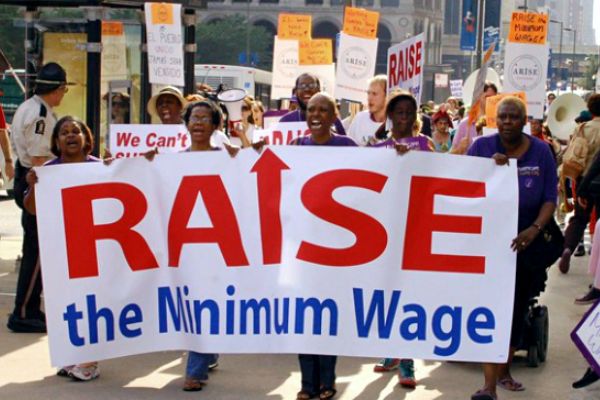$10.20 per hour needed to survive even in America’s cheapest county

Nowhere in America does a dollar go farther than in Hanson County, South Dakota. But even there, a worker still needs to earn nearly $3 more than the minimum wage to get by.
Dawn Holmberg, a 43-year-old single mom living just west of Hanson County, knows all too well how to make a dollar stretch as far as it can. She works as a cashier earning $10.50 an hour. That’s more than the minimum wage, but nearly $7 less than what it takes for a worker with one kid to afford basic expenses in the region, according to an analysis produced for The Huffington Post by Wider Opportunities for Women, a non-profit advocacy organization aimed at boosting low-income women and families.
“We don’t do anything, we stay home,” Holmberg said of her budgeting strategy. “The kids don’t get what they need. Money’s tight all the time.”
Even a worker with no kids living in Hanson would need to earn $10.20 an hour to achieve basic economic security, according to WOW researchers.
The $10.20 wage is nearly $3 more than the current federal minimum wage of $7.25 an hour, which is also the minimum wage in South Dakota. In 2012, there were about 12,000 workers in South Dakota subsisting on paychecks at the minimum wage or below, according to the Bureau of Labor Statistics.
WOW defines economic security as having enough money to afford basic necessities like housing, food, utilities, emergency savings and childcare expenses (for workers with kids), but no room for extras, according to Shawn McMahon, WOW’s acting director. A worker earning the $10.20 wage in South Dakota would make a yearly income that’s enough to put them about $9,000 above the federal poverty threshold, but not enough to protect them from economic insecurity.
“In the place with the lowest cost of living the minimum wage falls far short,” Sean McMahon, WOW’s acting director, told HuffPost. “In most places in America we need either multiple earners or multiple minimum wage jobs to even achieve any type of economic security.”
WOW’s researchers found that it would take a minimum wage of $14.17 an hour for workers to achieve economic security nationally. In areas of the country where the cost of living is high, the federal minimum wage covers a small fraction of what it takes to afford basic needs, the analysis found. In Montgomery County, Maryland, the area where the cost of living is highest, it takes a minimum wage of $23.65 for a worker to achieve basic economic security.
Montgomery County borders Washington D.C., which has recently become a battleground in the fight over paying workers a living wage. The D.C. City Council passed a bill earlier this month requiring large retailers in the city to pay their workers at least $12.50 per hour, more than $4 more than the city’s minimum wage. Walmart has threatened to pull three planned stores in the city if Mayor Vincent Gray signs the bill into law.
WOW’s findings add to the growing body of evidence that the minimum wage is too low to provide a living wage for most Americans. President Obama aimed to tackle this problem by proposing to raise the minimum wage to $9 per hour in his State of the Union address earlier this year, a plan that was shot down by leading Republicans.
Holmberg acknowledges that her wage, which is both higher than Obama’s proposal and the minimum wage in her state, provides enough to ensure “we’re not living in poverty.” Still, after rent, utilities, child care and groceries, she says, she has little money left to save, let alone spend on discretionary items.
“We just live paycheck to paycheck,” she said. “It is hard. We spend a lot of time at the park or at the lake, something that doesn’t really cost anything to do.”







